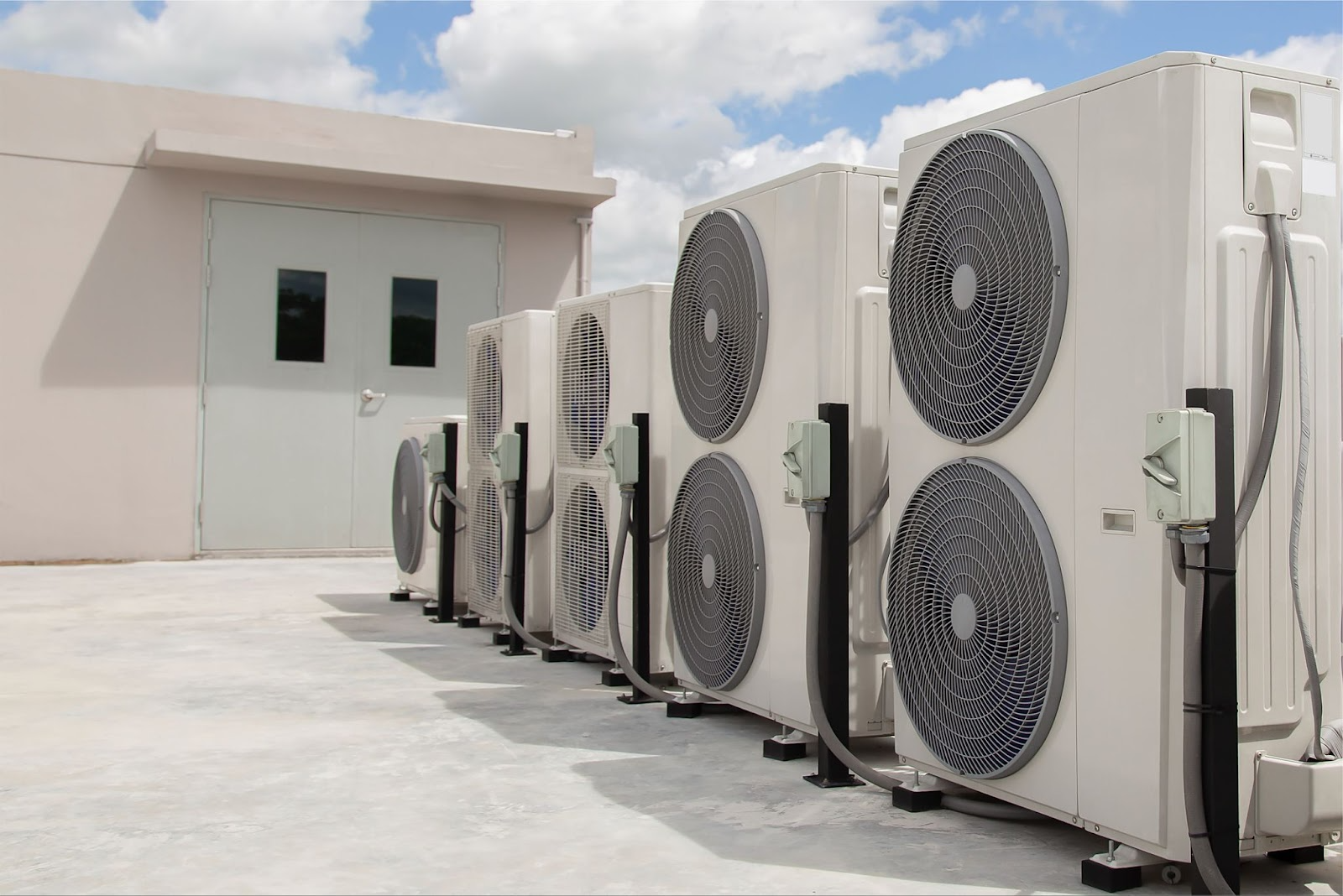When choosing a heating, ventilation, and air conditioning (HVAC) system for a commercial building or large residential property, the decision between Variable Refrigerant Flow (VRF) and Variable Air Volume (VAV) systems is critical. Each system offers unique benefits tailored to different applications, making it essential to understand their differences before making an investment.

Understanding VRF Systems
A Variable Refrigerant Flow (VRF) system uses refrigerant as the medium for both heating and cooling. This refrigerant is circulated within a closed-loop system, enabling precise temperature control throughout the building. VRF systems connect a single outdoor unit to multiple indoor units, allowing for highly flexible zoning capabilities. One of the most notable features of VRF systems is their ability to provide simultaneous heating and cooling to different areas of a building, optimizing overall comfort and energy efficiency.
4 Key Benefits of VRF Systems
- Energy Efficiency VRF systems adjust the refrigerant flow based on current demand, reducing unnecessary energy consumption and improving operational efficiency.
- Precise Temperature Control Each zone can be individually controlled, allowing occupants to set preferred temperatures for their specific spaces.
- Design Flexibility The modular design of VRF systems makes them adaptable to a variety of architectural layouts, including retrofit projects and buildings with space limitations.
- Quiet Operation These systems are known for their low noise levels, making them ideal for offices, hotels, and other noise-sensitive environments.
Exploring VAV Systems
Variable Air Volume (VAV) systems regulate indoor climate by varying the volume of air delivered to each zone. A central air handler distributes conditioned air through ductwork, while VAV boxes adjust the airflow based on demand. This system is well-suited to spaces where temperature loads vary throughout the day.
3 Advantages of VAV Systems
- Cost-Effective Installation VAV systems typically have lower upfront costs compared to VRF systems, making them appealing for projects with tight budgets.
- Simplified Maintenance With fewer complex components, VAV systems can be easier and less expensive to maintain over time.
- Efficient Operation in Variable Loads These systems perform well in buildings with fluctuating occupancy levels and changing thermal demands.
VRF vs. VAV: Making the Right Choice
Selecting between a VRF and VAV system depends on several key factors, including the building’s layout, usage patterns, and financial parameters. VRF systems are often the preferred choice for facilities requiring individualized zone control, such as hotels, medical clinics, or multi-use buildings. Meanwhile, VAV systems are more suitable for large open areas like auditoriums, office floors, or educational institutions where simultaneous heating and cooling is less critical.
Each system offers distinct benefits and limitations. Evaluating your specific needs, long-term energy goals, and budget will help ensure the best HVAC solution for your property.
Choose Expertise for Your HVAC Needs in Wall, NJ
At A-1 Comfort Care Heating, Cooling & Plumbing in Wall, NJ, we specialize in helping property owners make informed HVAC decisions. Whether you’re considering VRF or VAV systems, our experienced team is here to guide you toward the most effective and energy-efficient solution for your building.
Call us today at (732) 578-0379 or fill out our online form to schedule a consultation. Let us help you create a comfortable indoor environment that meets your unique needs.




